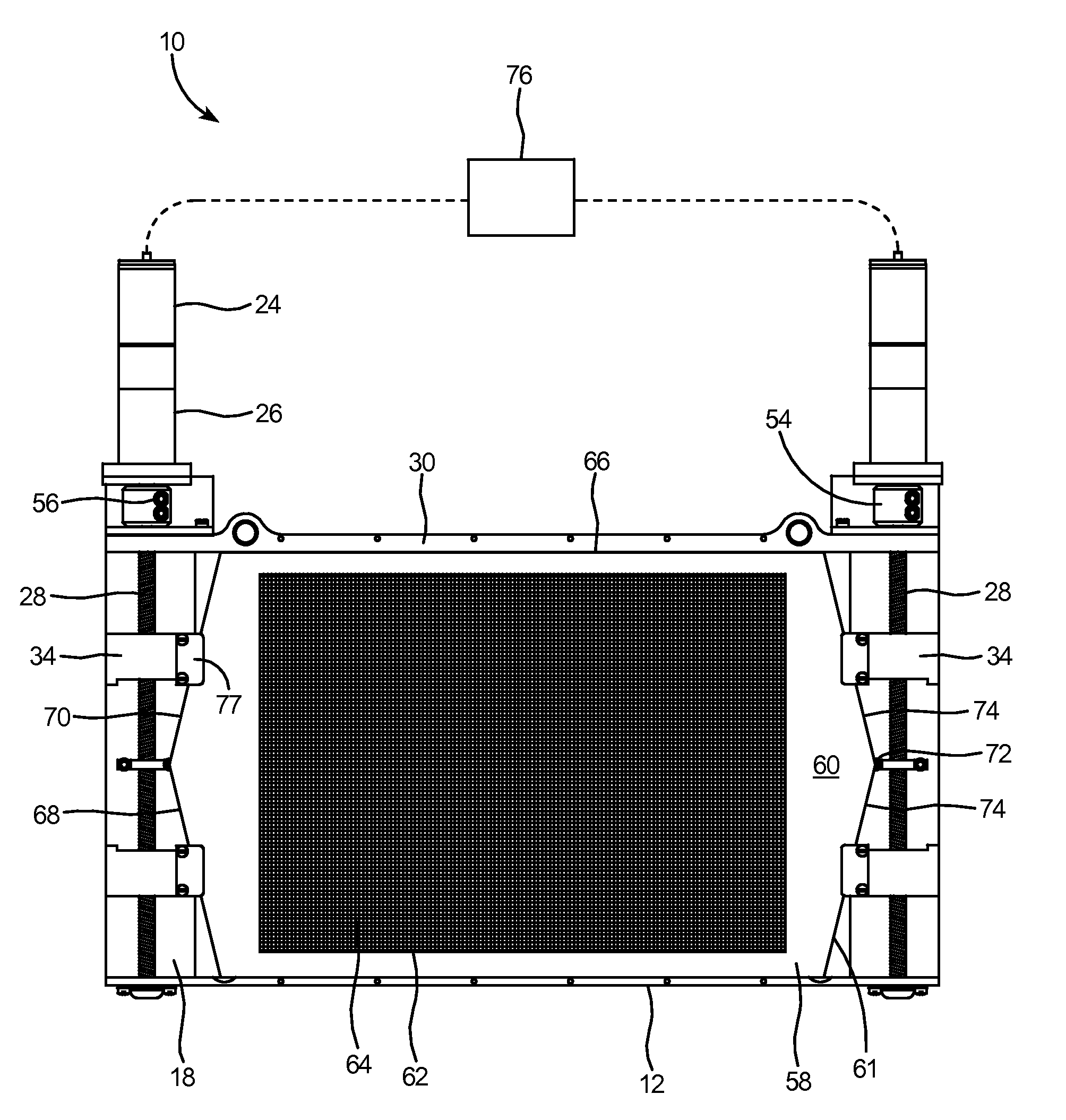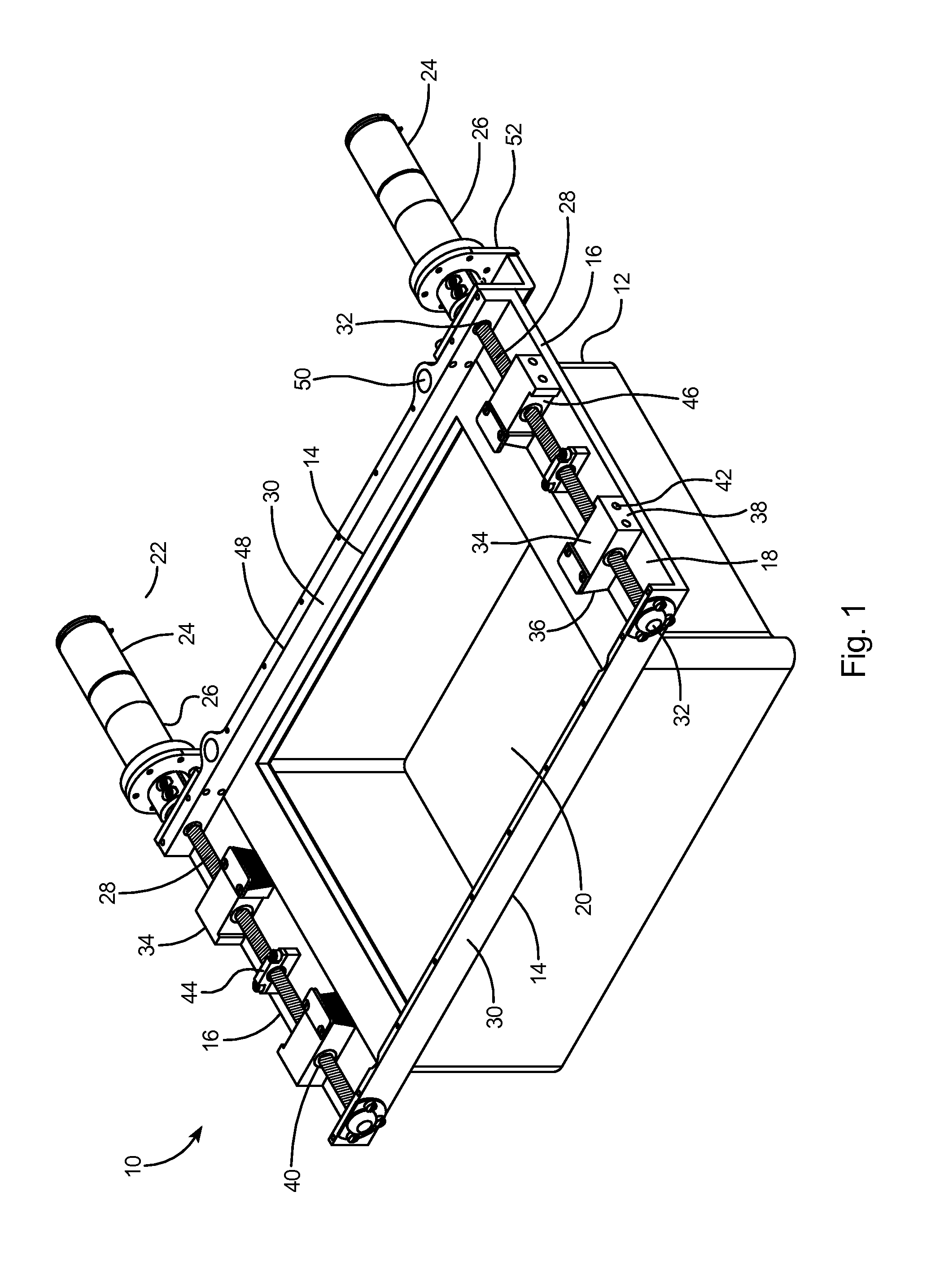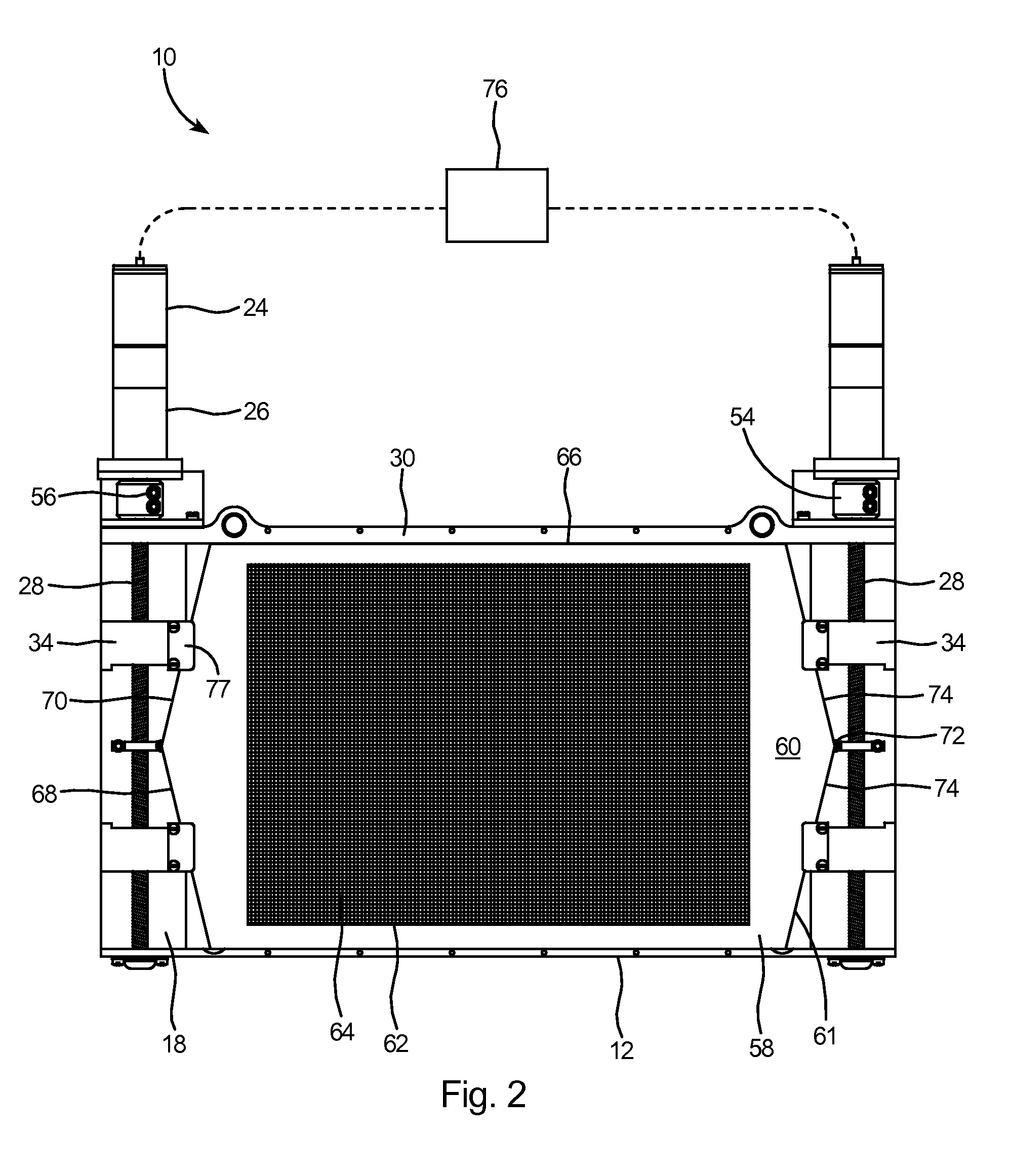Apparatus and method for variable angle slant hole collimator
a collimator and variable angle technology, applied in the field of gamma and xray photon system radiation collimator, can solve the problems of inaccurate collimation angle that reduces the output image quality, is not always feasible to combine aspects of these methods, and reduces the size of the opening, so as to reduce the radiation dose to the patient. , the effect of reducing the radiation dos
- Summary
- Abstract
- Description
- Claims
- Application Information
AI Technical Summary
Benefits of technology
Problems solved by technology
Method used
Image
Examples
example
[0049]As an example, a VASH collimator constructed for breast imaging included 50 leaves that were each 0.25 mm in thickness for a total stack height of 12.5 mm. A tungsten frame held the leaves. Two lead screws, each being ½ right-hand threaded and ½ being left-hand threaded, were driven by a motor and gearbox to change the viewing angle + / −28 degrees. There are two end bearings per end, one supporting each end of each screw. A pillow block supported each screw in the center. A drive nut was embedded in each wedge block to accommodate the screw threads of the lead screws. Each wedge included a clearance notch for pillow block clearance. A gamma transparent cover was used to cover the collimator stack, both for keeping the apertures clear and shielding the patient from moving parts of the collimator. A brushless motor available from Micromo of Clearwater, Fla., was used to power the lead screws and wedge blocks. The gearing ratio of the motor and gearbox was 134:1. The motion of the...
PUM
 Login to View More
Login to View More Abstract
Description
Claims
Application Information
 Login to View More
Login to View More - R&D
- Intellectual Property
- Life Sciences
- Materials
- Tech Scout
- Unparalleled Data Quality
- Higher Quality Content
- 60% Fewer Hallucinations
Browse by: Latest US Patents, China's latest patents, Technical Efficacy Thesaurus, Application Domain, Technology Topic, Popular Technical Reports.
© 2025 PatSnap. All rights reserved.Legal|Privacy policy|Modern Slavery Act Transparency Statement|Sitemap|About US| Contact US: help@patsnap.com



